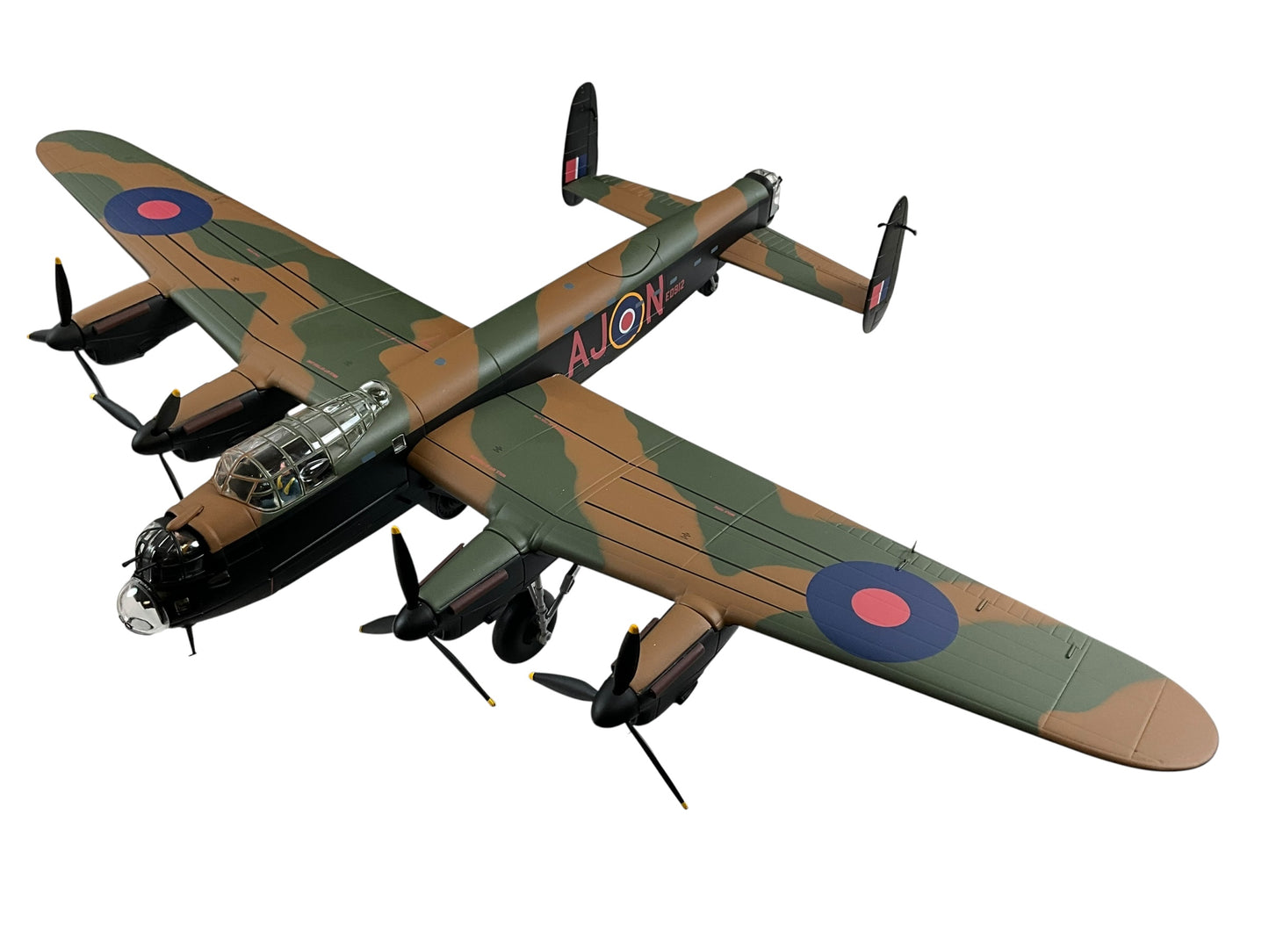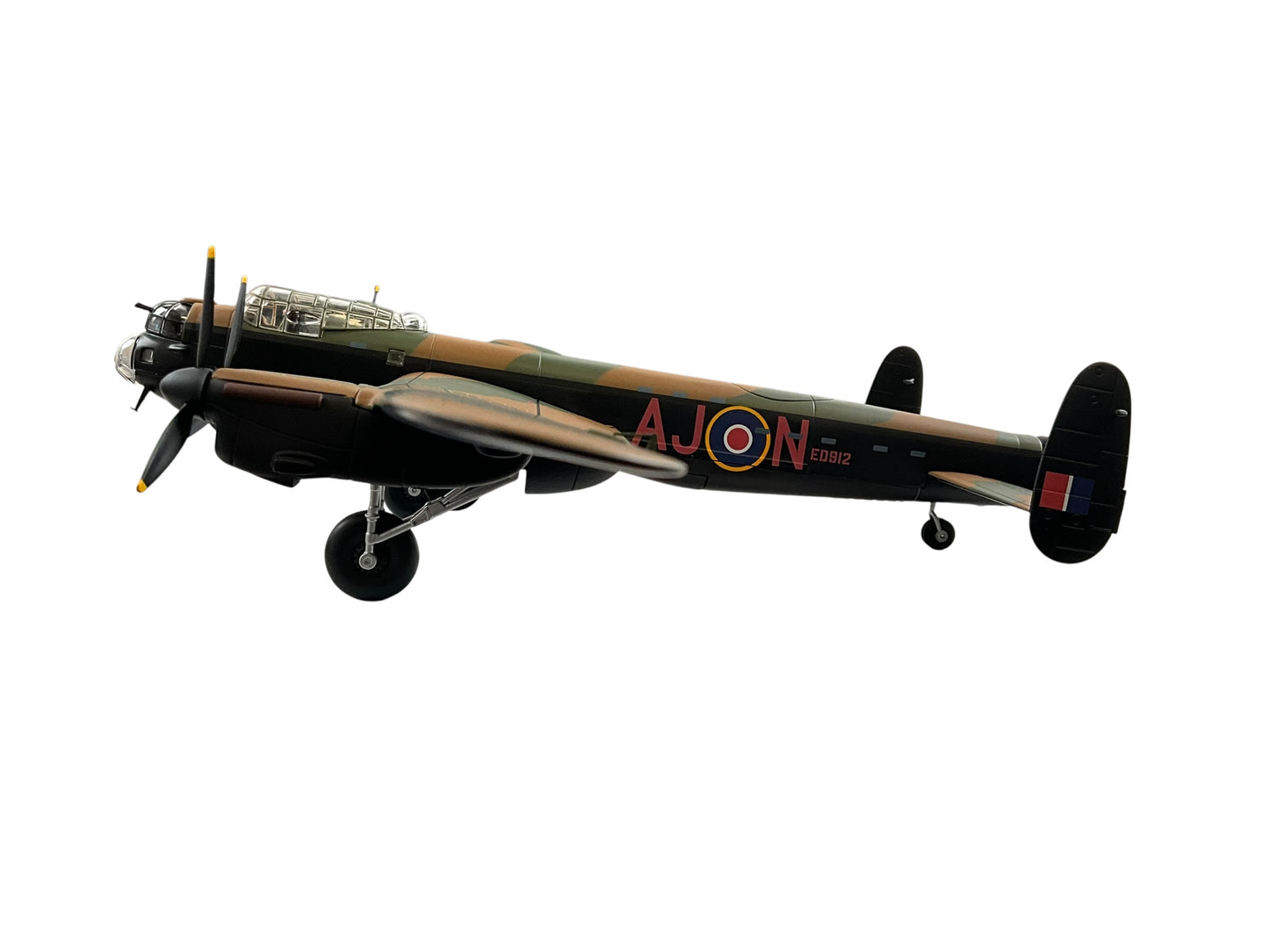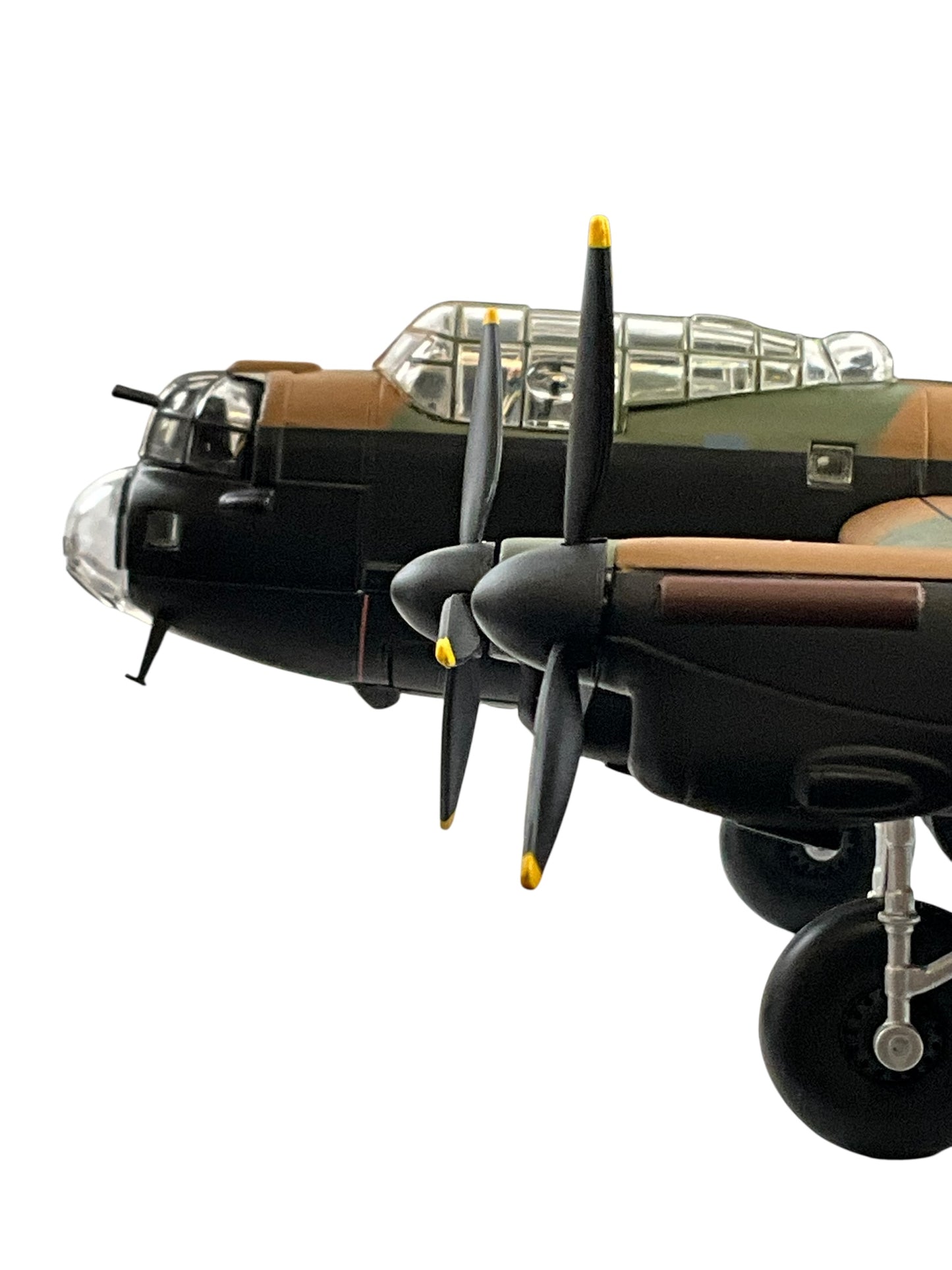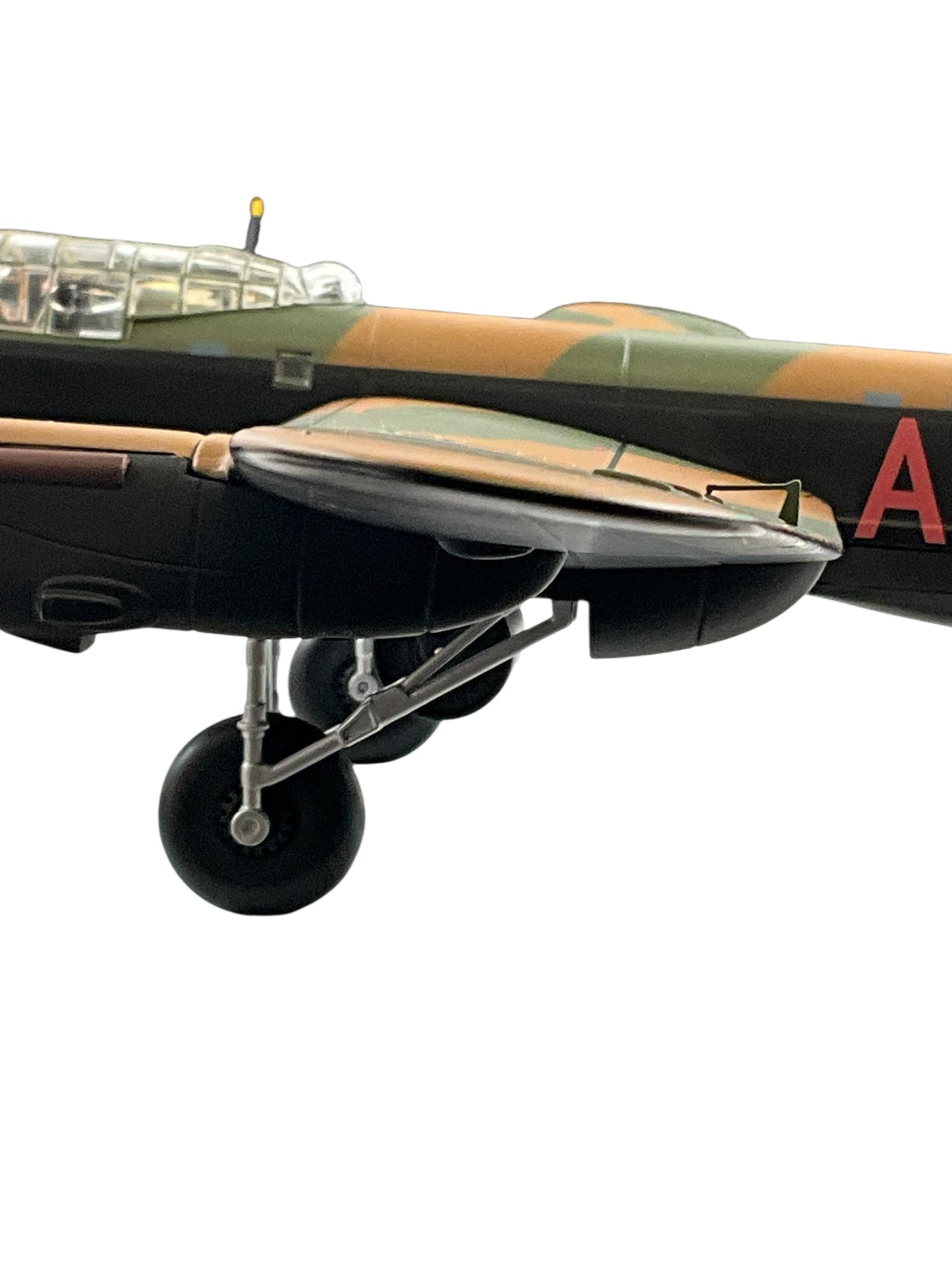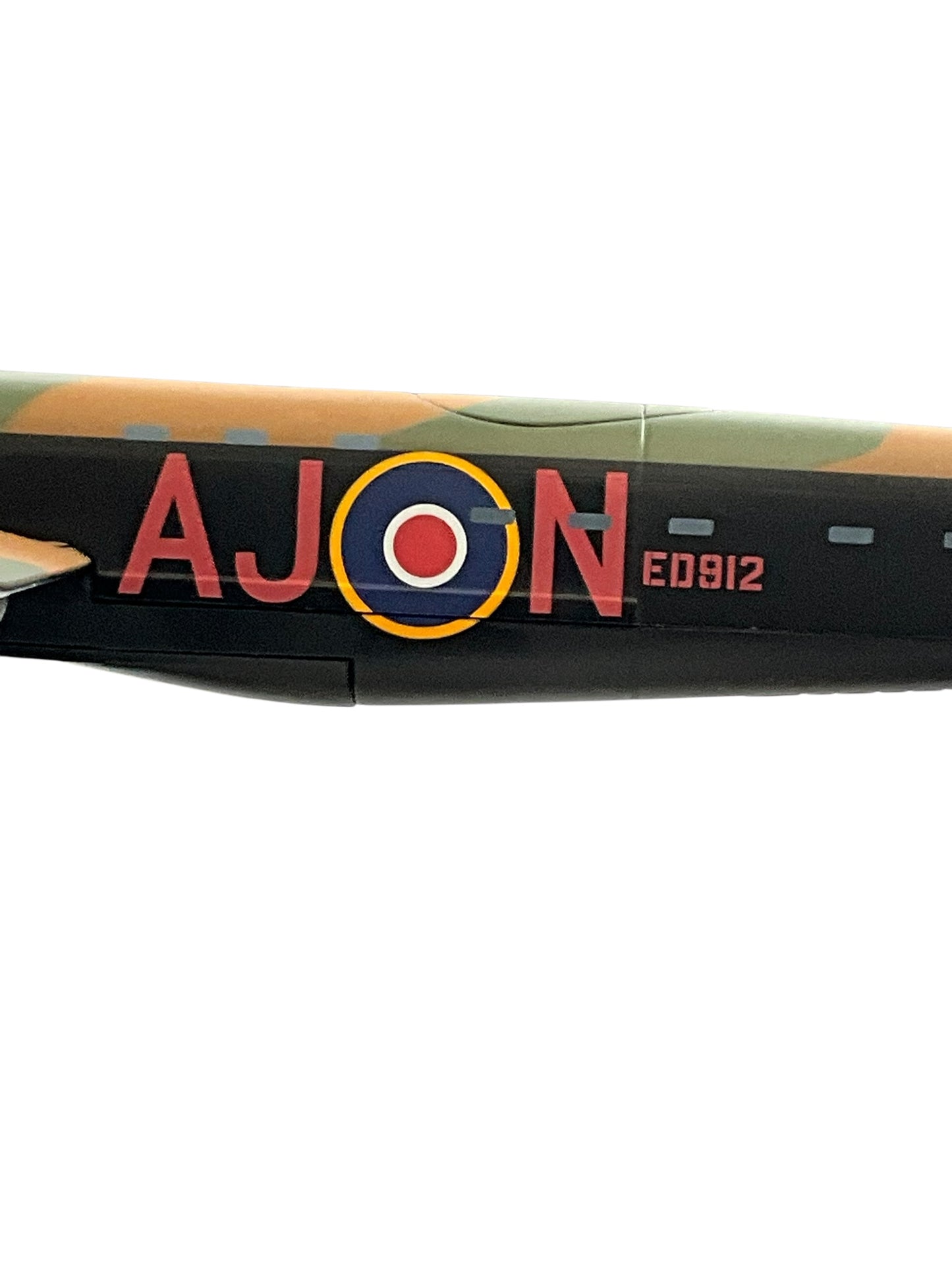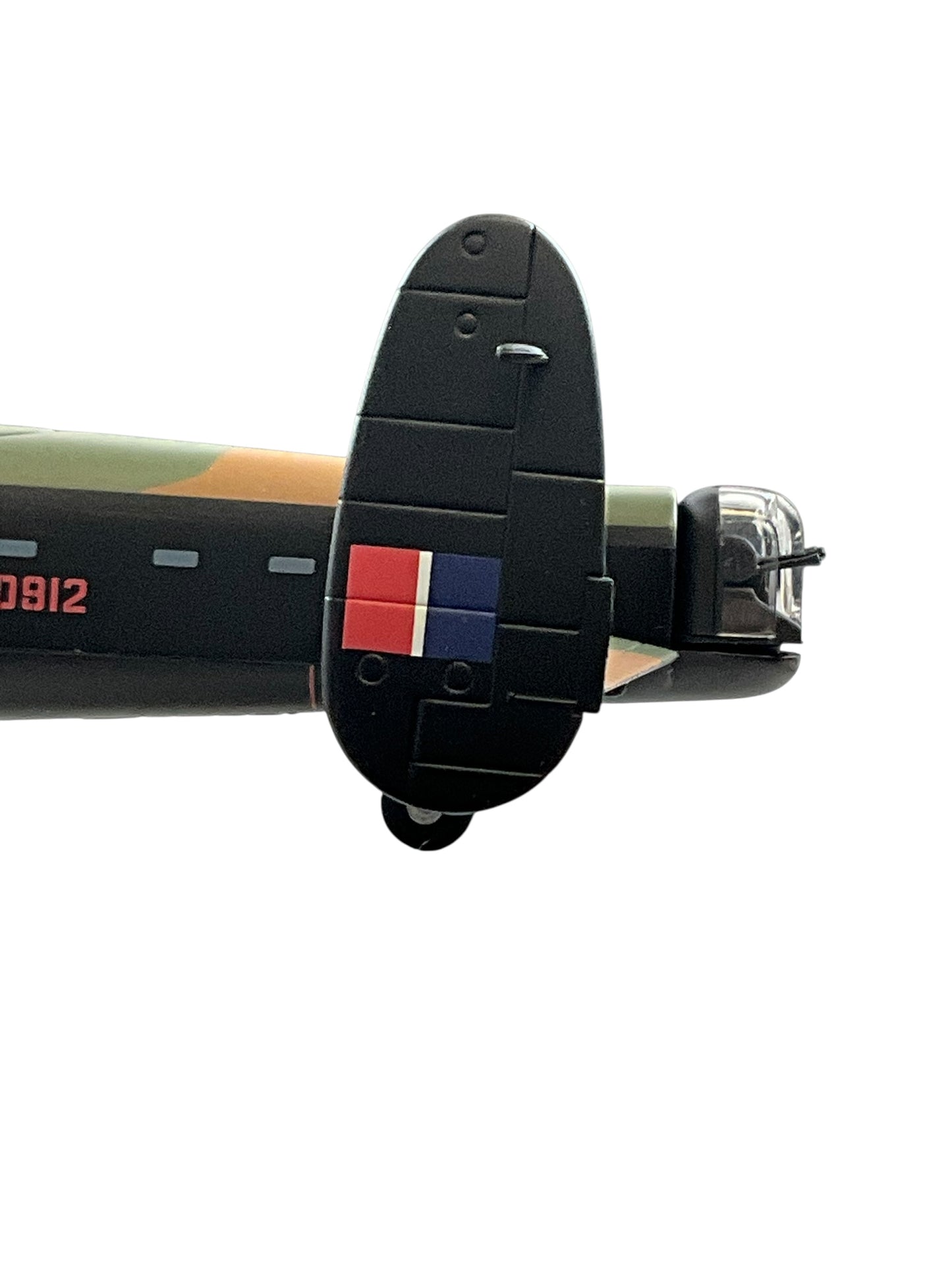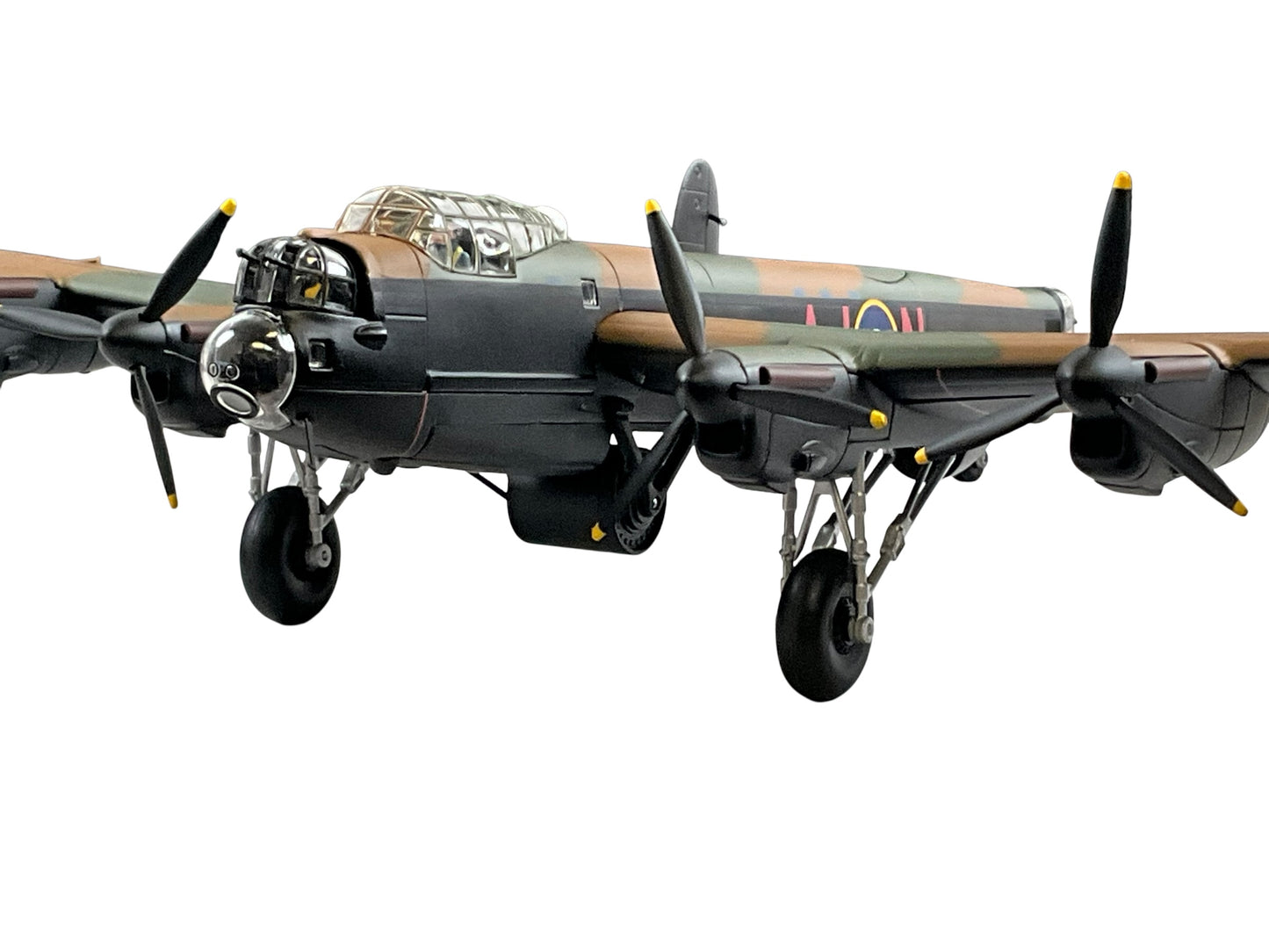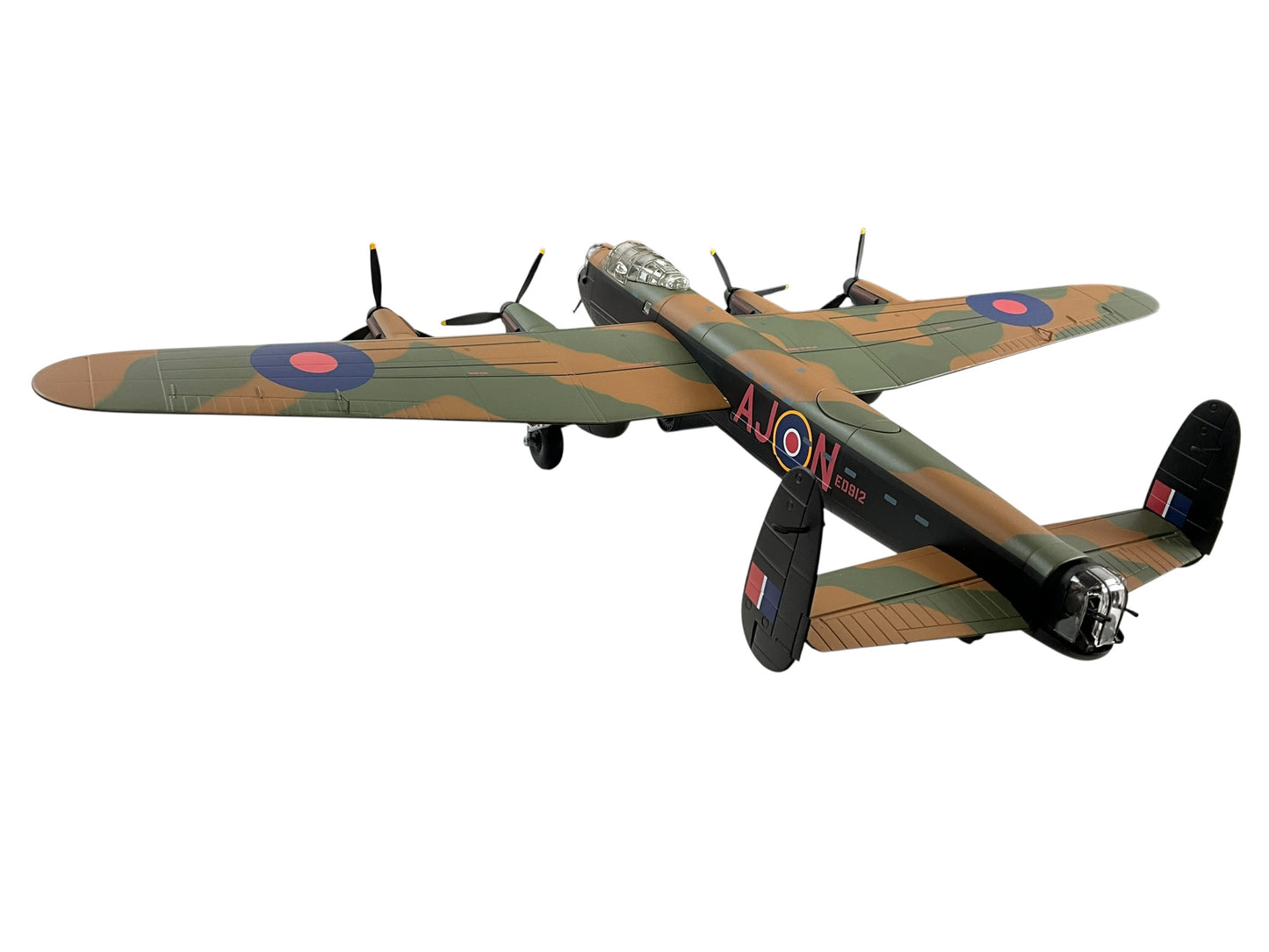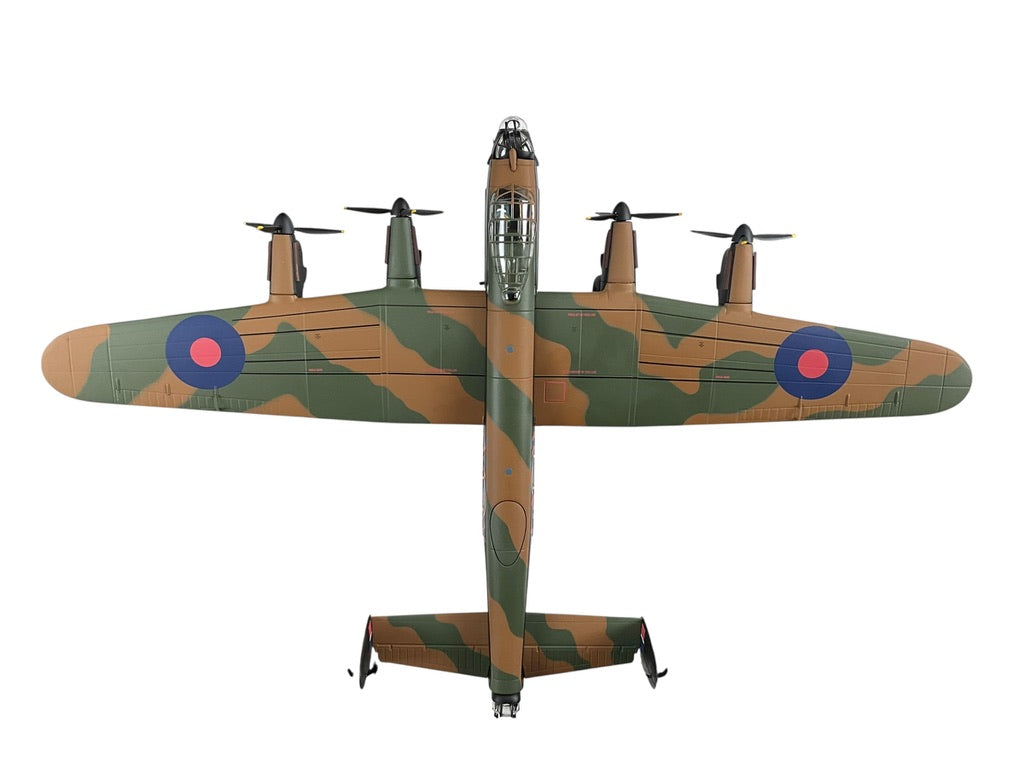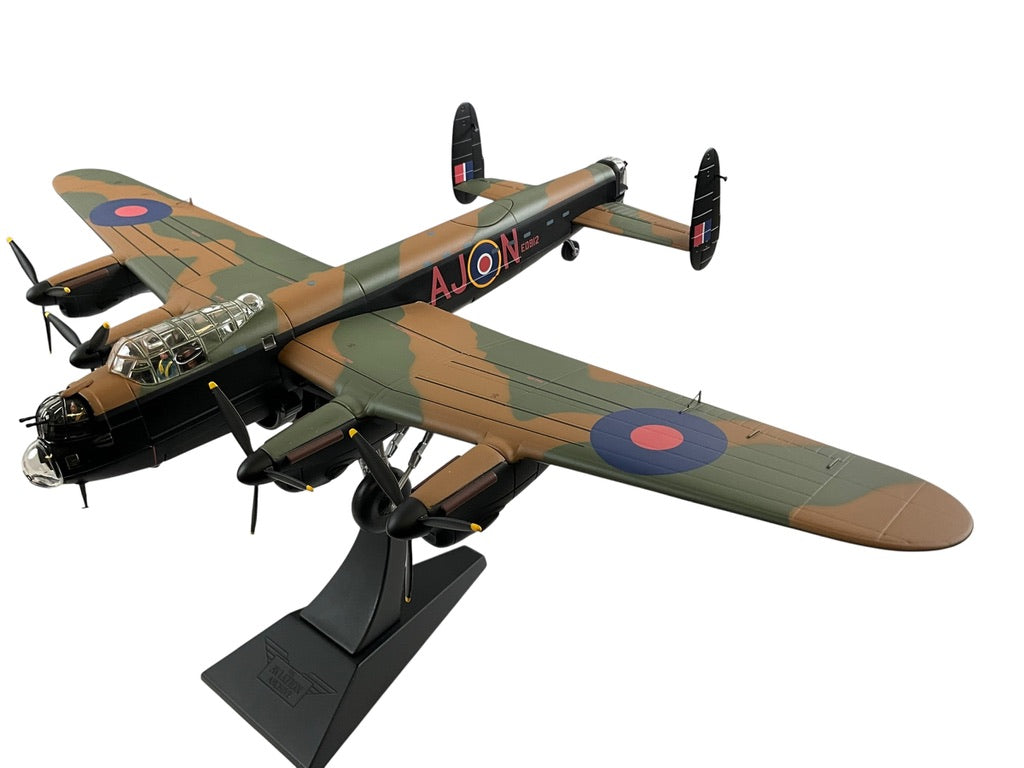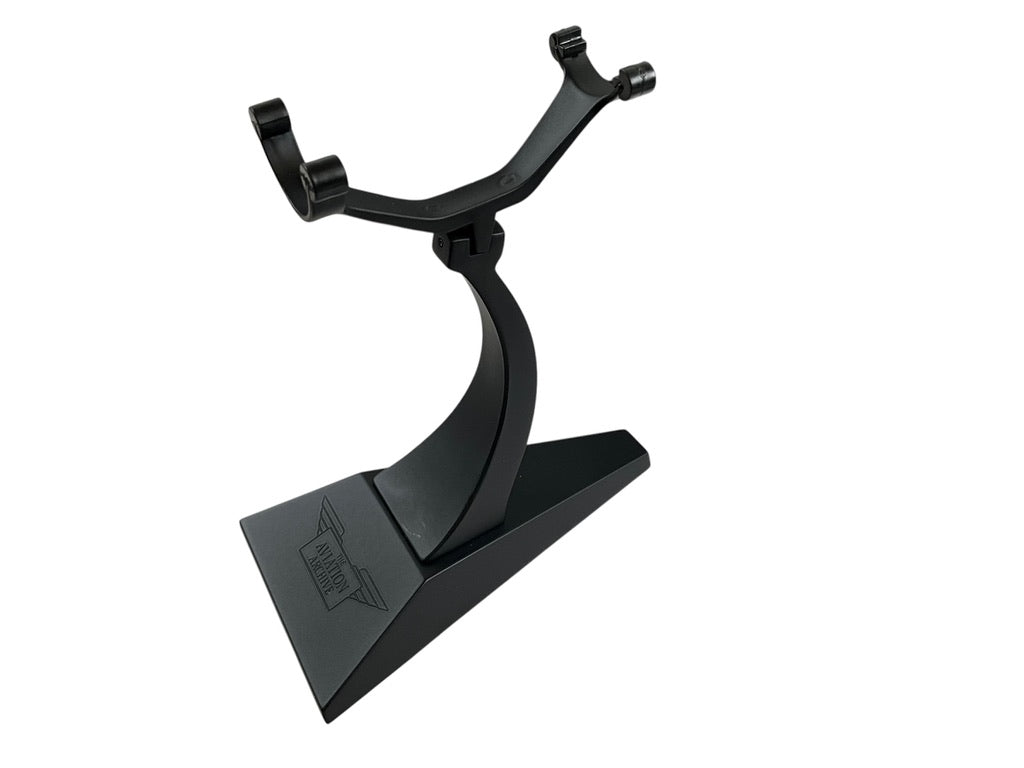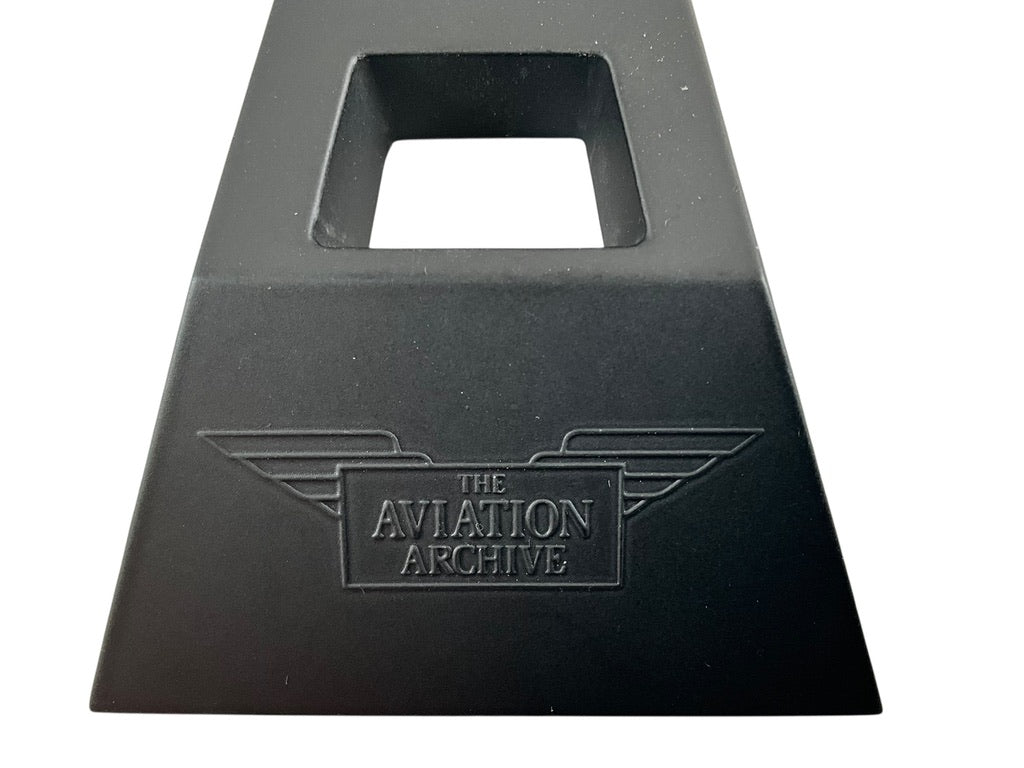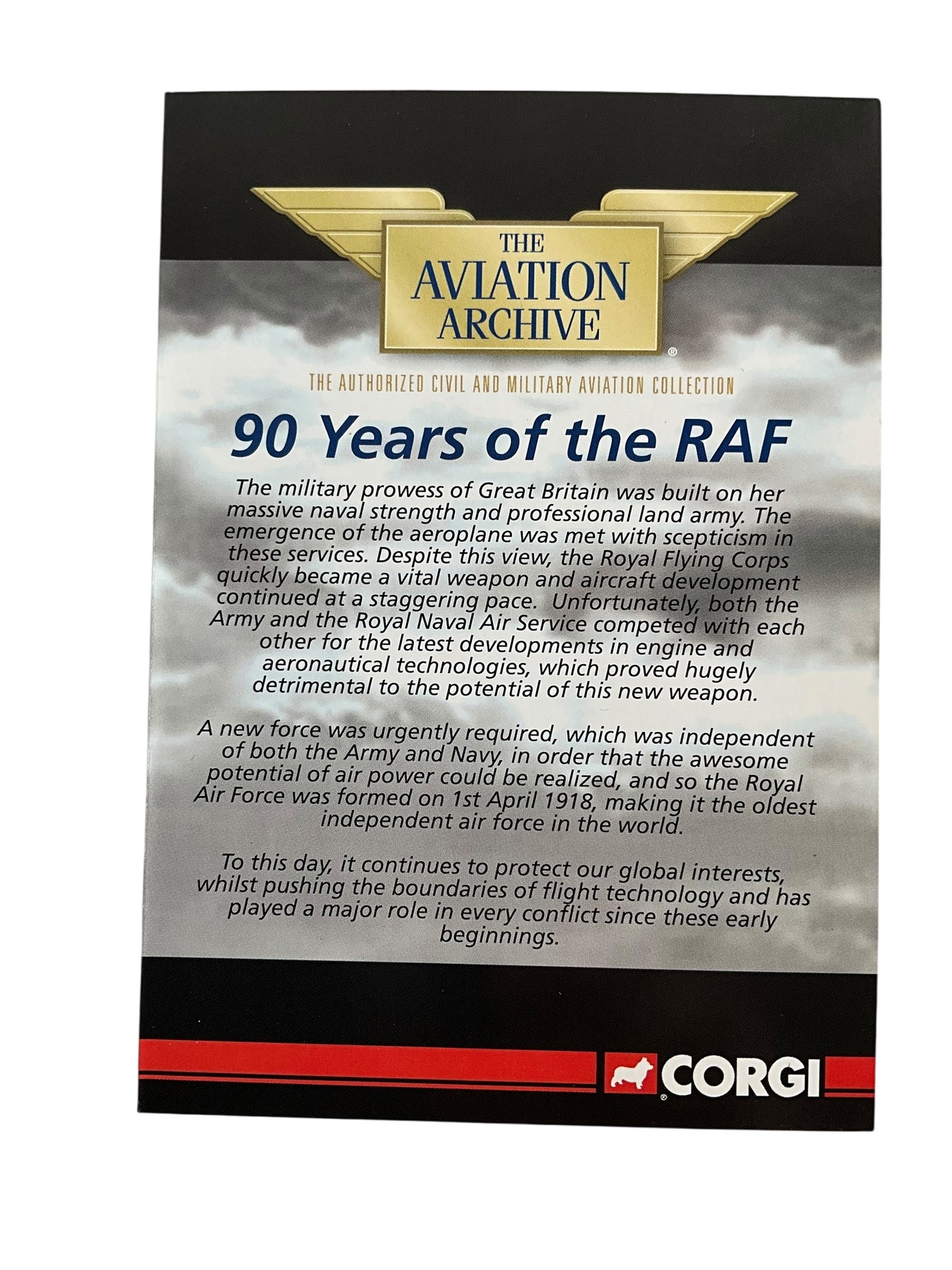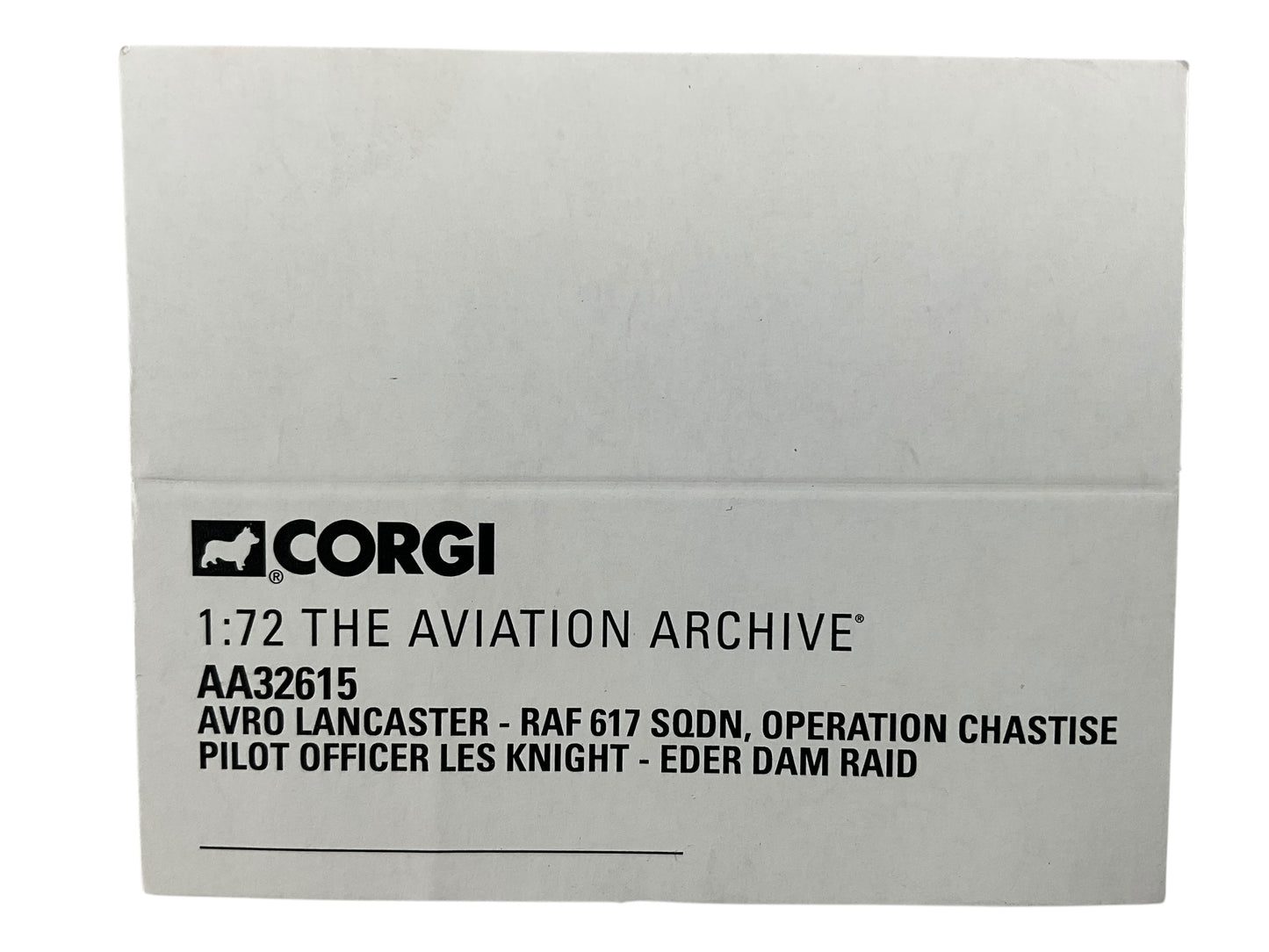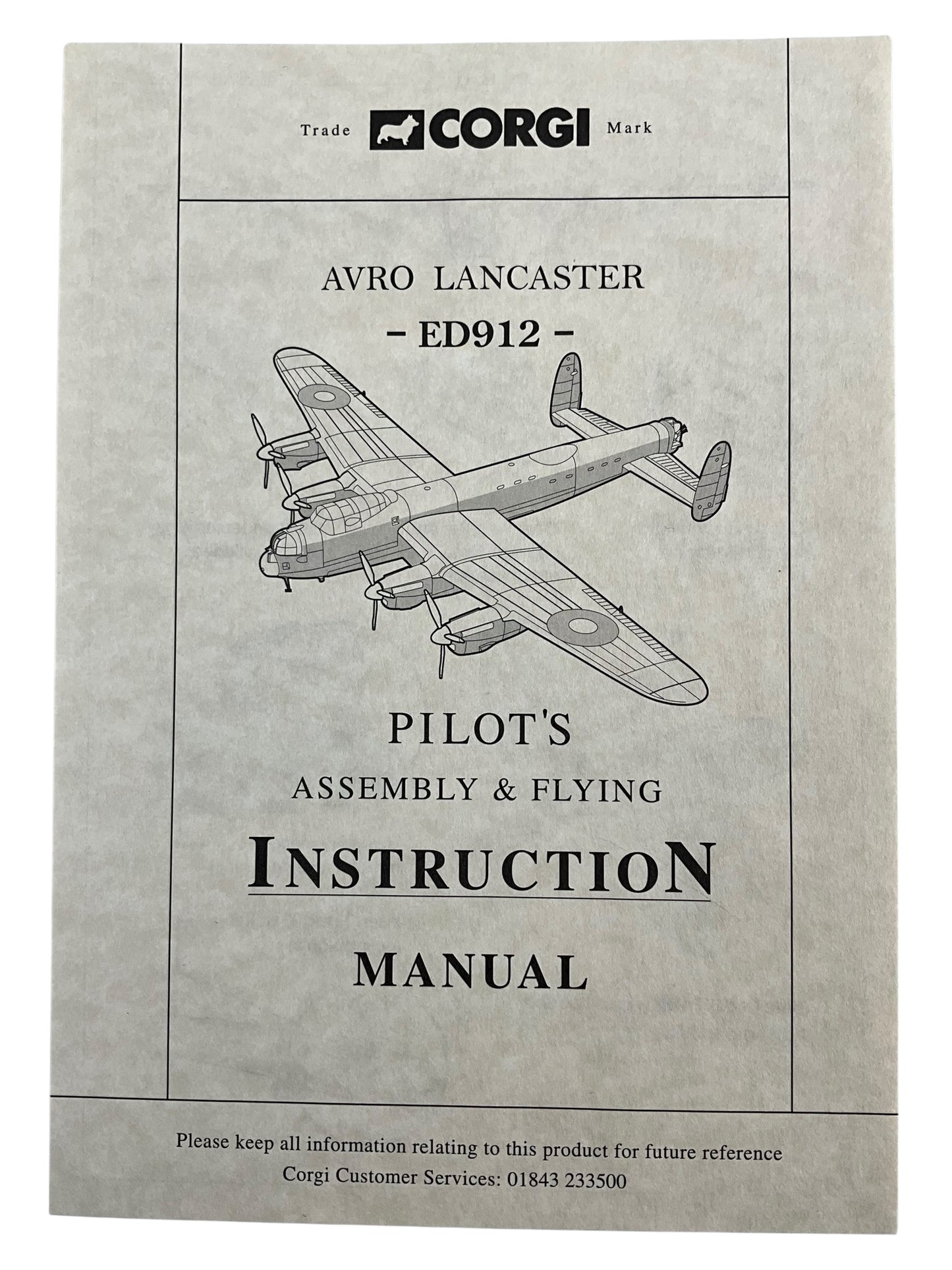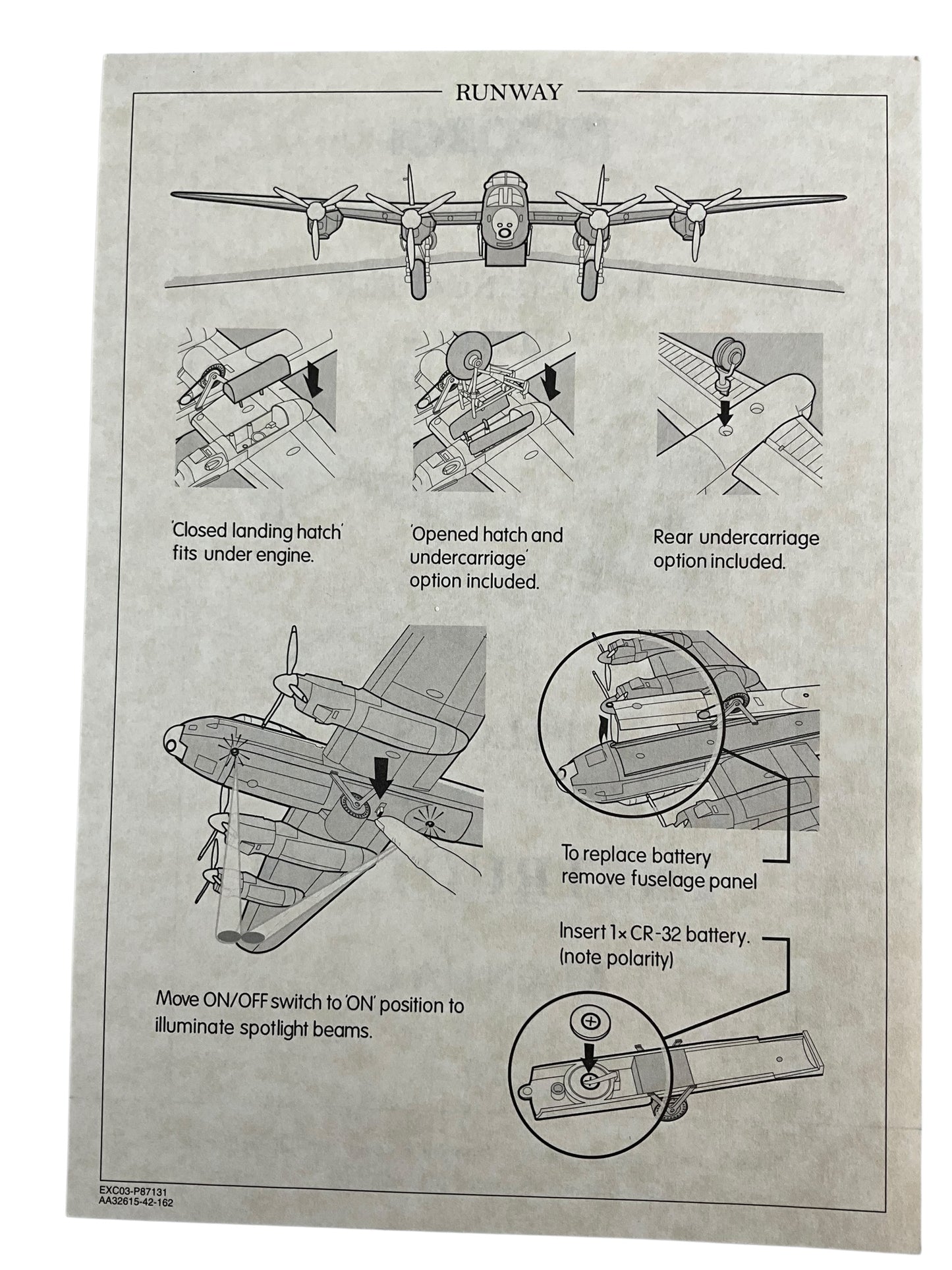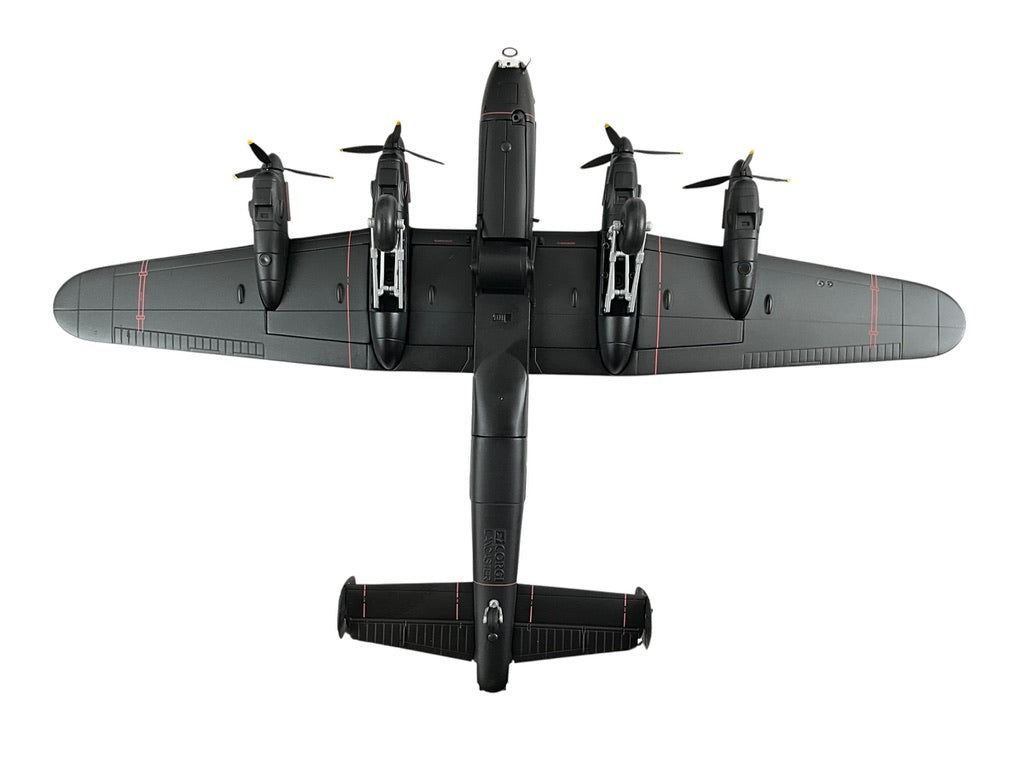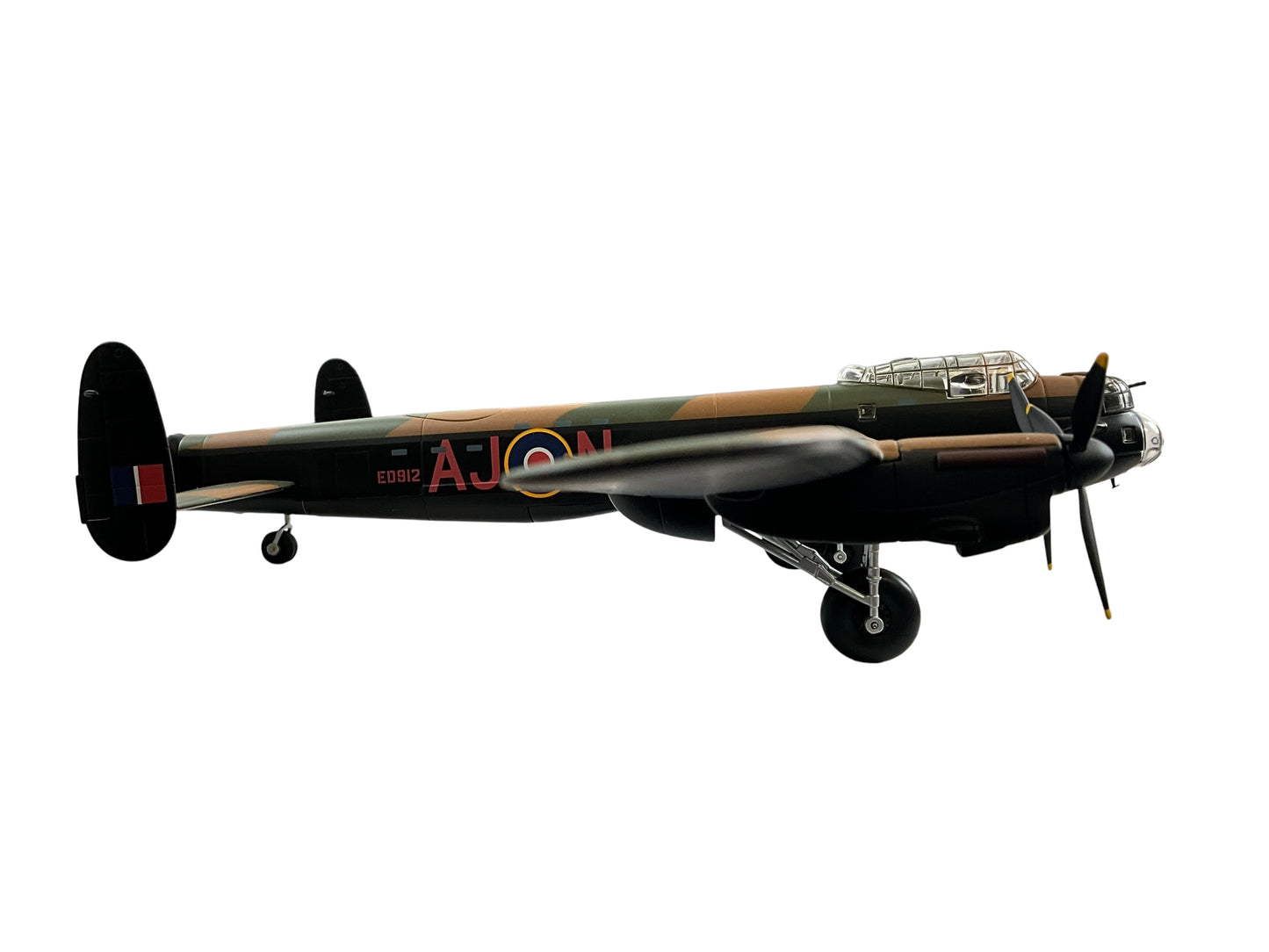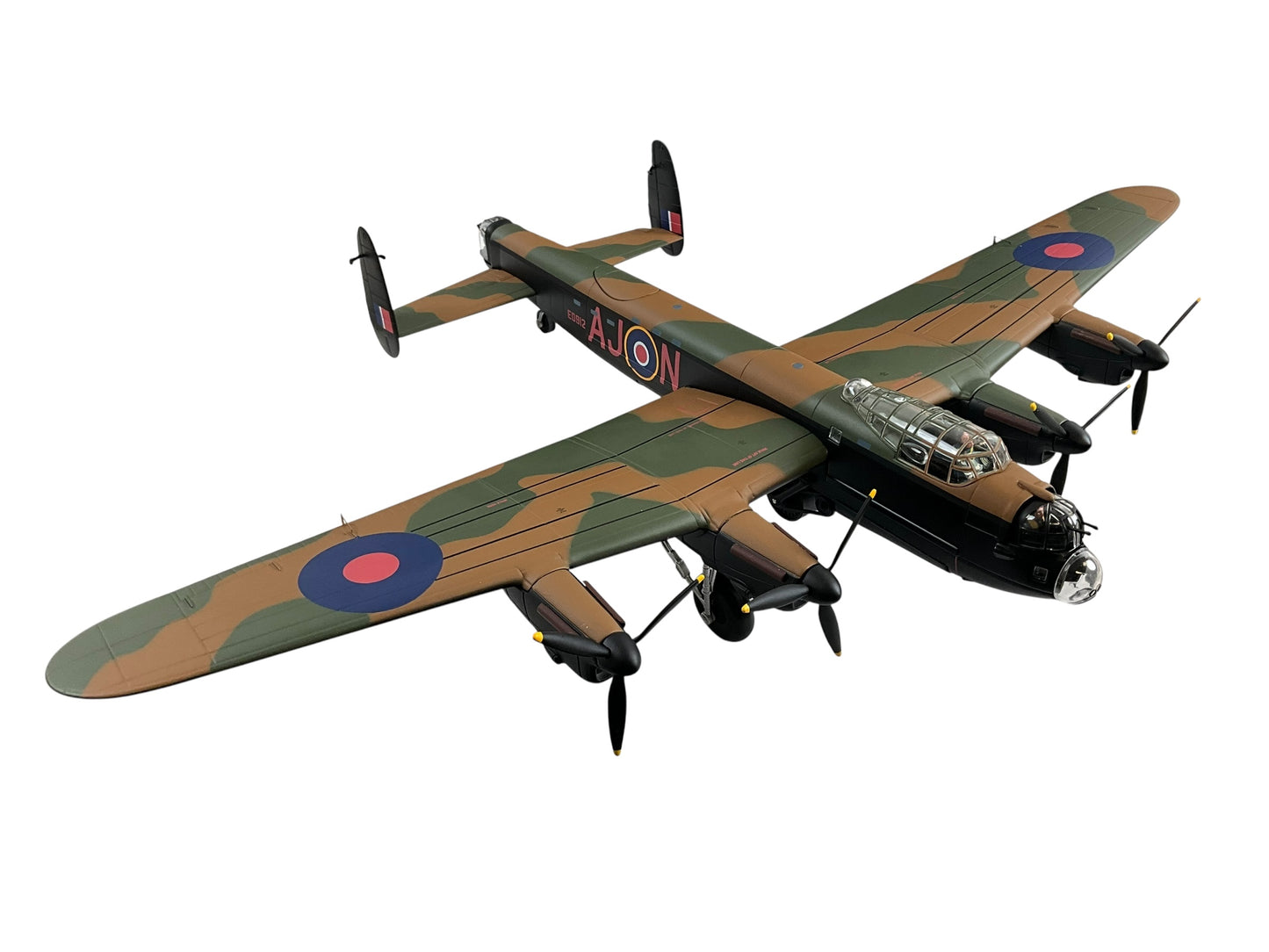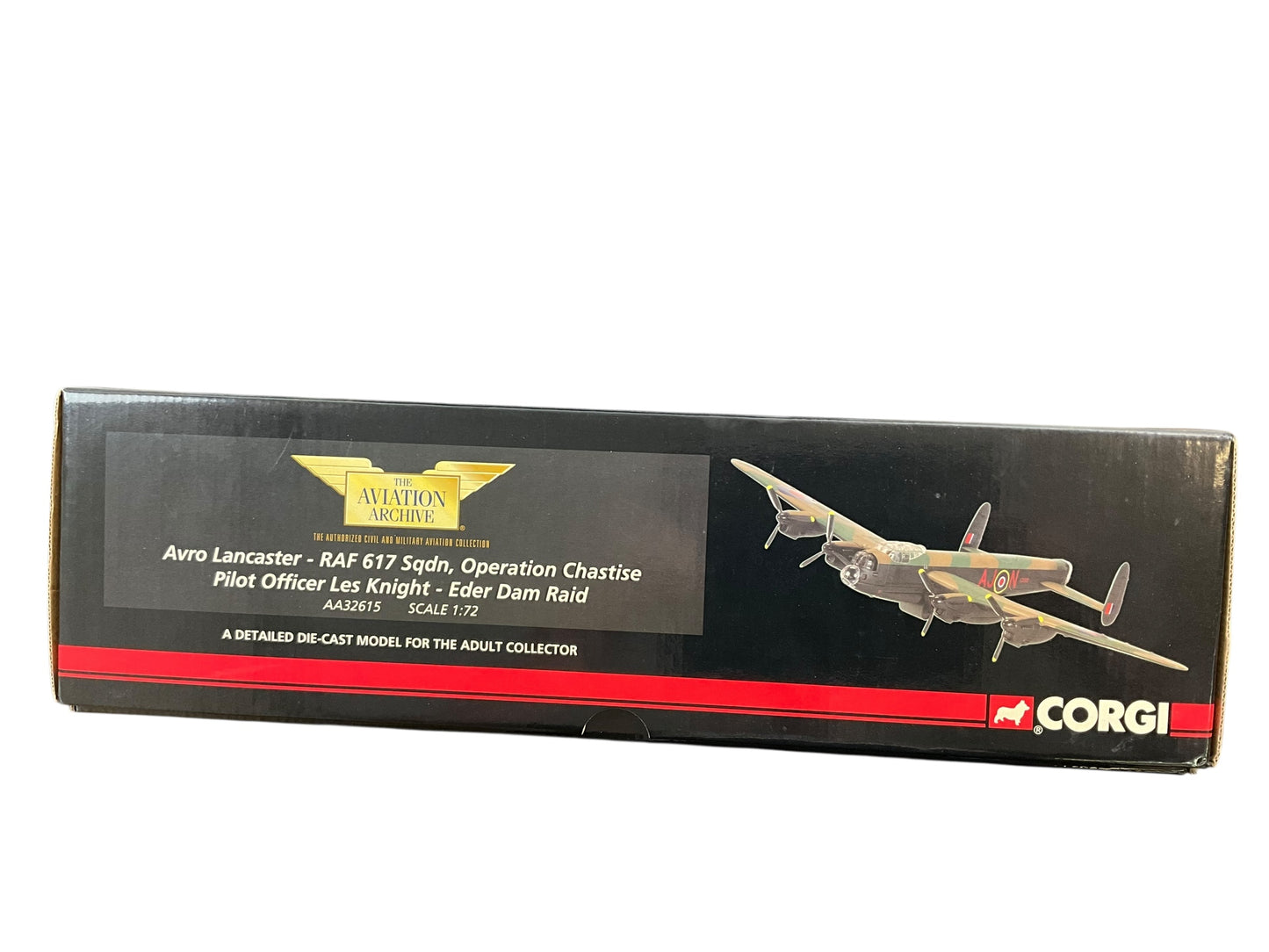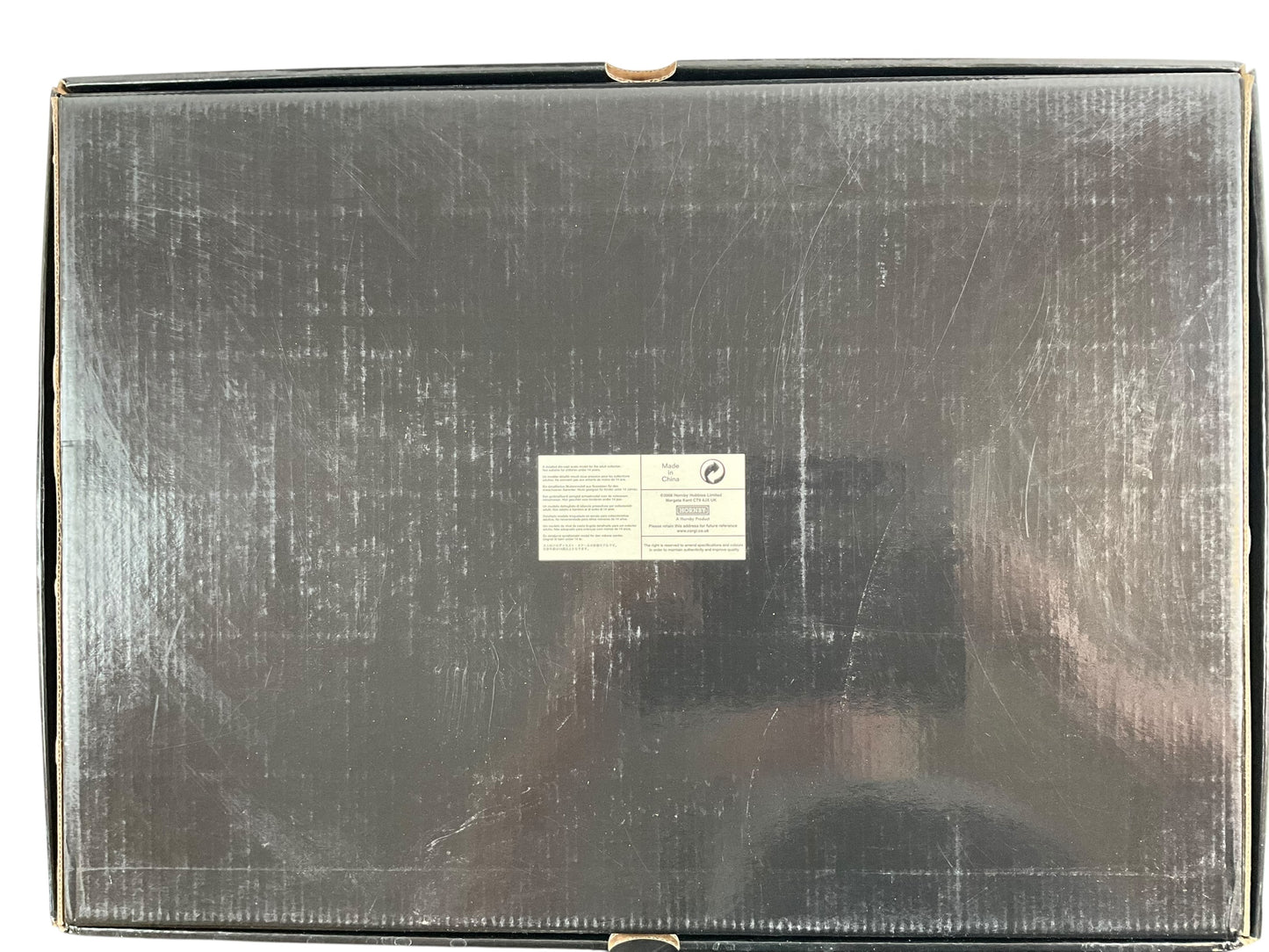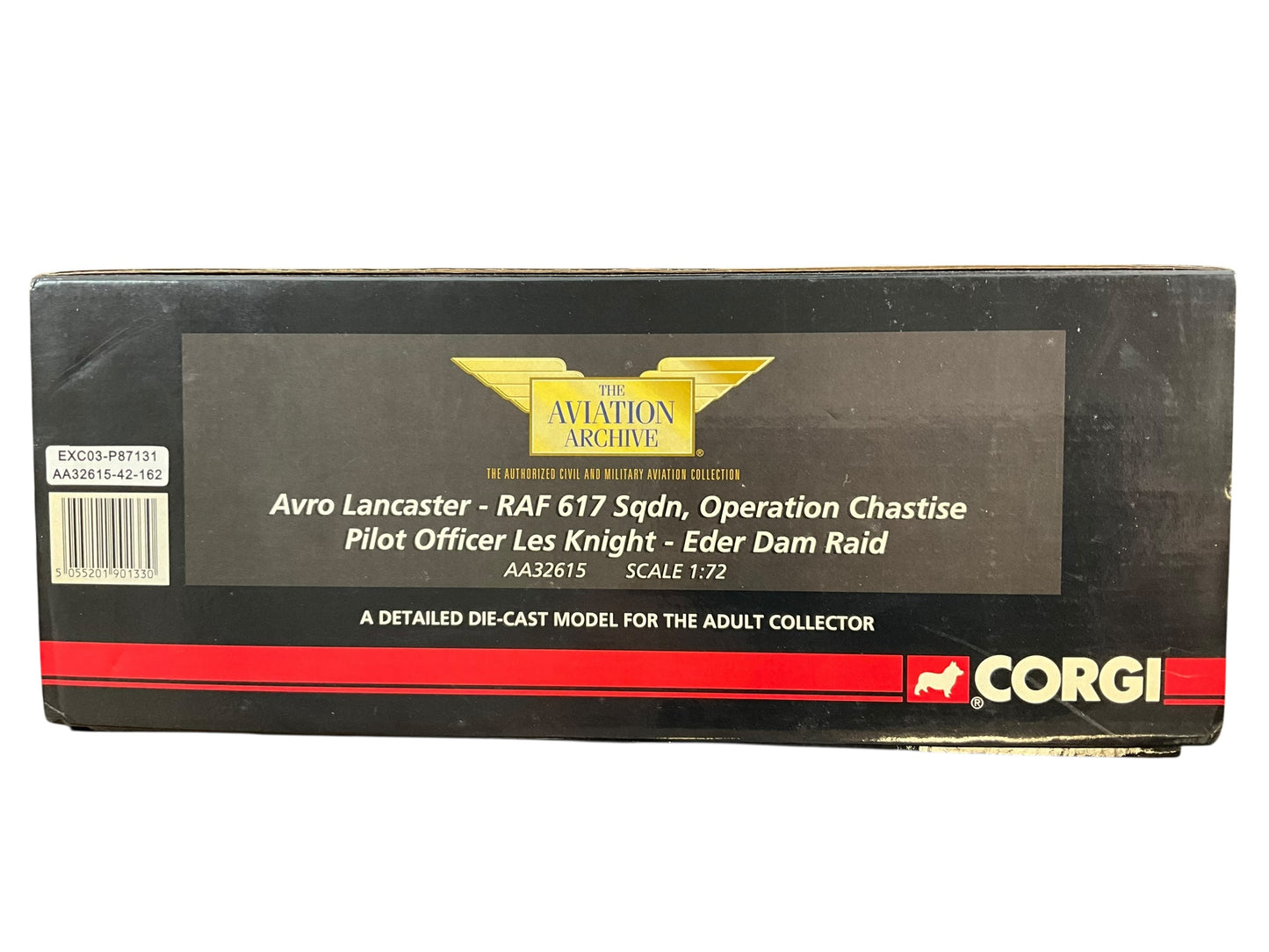airdrop militaria
1/72 Corgi (AA32615) Avro Lancaster (ED912 / AJ+N) Flown by P/O Les Knight "Operation Chastise" Eder Dam Raid 617 Sqdn R.A.F. (Limited Edition #1063 of ONLY 1501)
1/72 Corgi (AA32615) Avro Lancaster (ED912 / AJ+N) Flown by P/O Les Knight "Operation Chastise" Eder Dam Raid 617 Sqdn R.A.F. (Limited Edition #1063 of ONLY 1501)
Couldn't load pickup availability
1/72 Corgi (AA32615) Avro Lancaster (ED912 / AJ+N) Flown by P/O Les Knight "Operation Chastise" Eder Dam Raid 617 Sqdn R.A.F. (Limited Edition #1063 of ONLY 1501)
May 16th 1943, w/Working Targetting Spotlights
Surely one of the most amazing attacks of the World War II was 'Operation Chastise', the attack by Lancasters of 617 Sqn against the German Ruhr valley dams using the famous bouncing bomb. Following the successful attack on the Mohne Dam, Guy Gibson led 5 Lancasters to the Eder. This dam was situated in extremely difficult terrain and as the aircraft struggled to line up on their target, one was destroyed as it was caught in the blast of an exploding bomb. Pilot Officer Les Knight was flying 'N for Nan' and he was charged with the final bombing run. The two previous mines had failed to breach the dam, but must have weakened the structure. Knight lined up his Lancaster and brought to bear all his training into this one final effort. His aim was true and at 2am on 17th May 1943 the Eder Dam was breached!
The aircraft were adapted Avro Lancaster Mk IIIs, known as B Mark III Special. To reduce weight, much of the armour was removed, as was the mid-upper turret. The substantial bomb and its unusual shape meant that the bomb doors were removed and the bomb itself hung, in part, below the body of the aircraft. It was mounted in two crutches and before dropping, it was spun up to speed by an auxiliary motor. Bombing from 60 ft (18 m) at 240 mph (390 km/h), at a very precise distance from the target, required expert crews, intensive night and low-altitude flight training, and the solutions to two technical problems. The first was to know when the aircraft was the correct distance from the target. The two key dams at Möhne and Eder had a tower at each end. A special aiming device (a device with two prongs making the same angle as the two towers at the correct distance from the dam) showed when to release the bomb. The second problem was to measure the aircraft's altitude (the usual barometric altimeters lacked sufficient accuracy). Two spotlights were mounted, one under the nose and another under the fuselage, such that at the correct height their light beams would converge on the surface of the water.
Share
